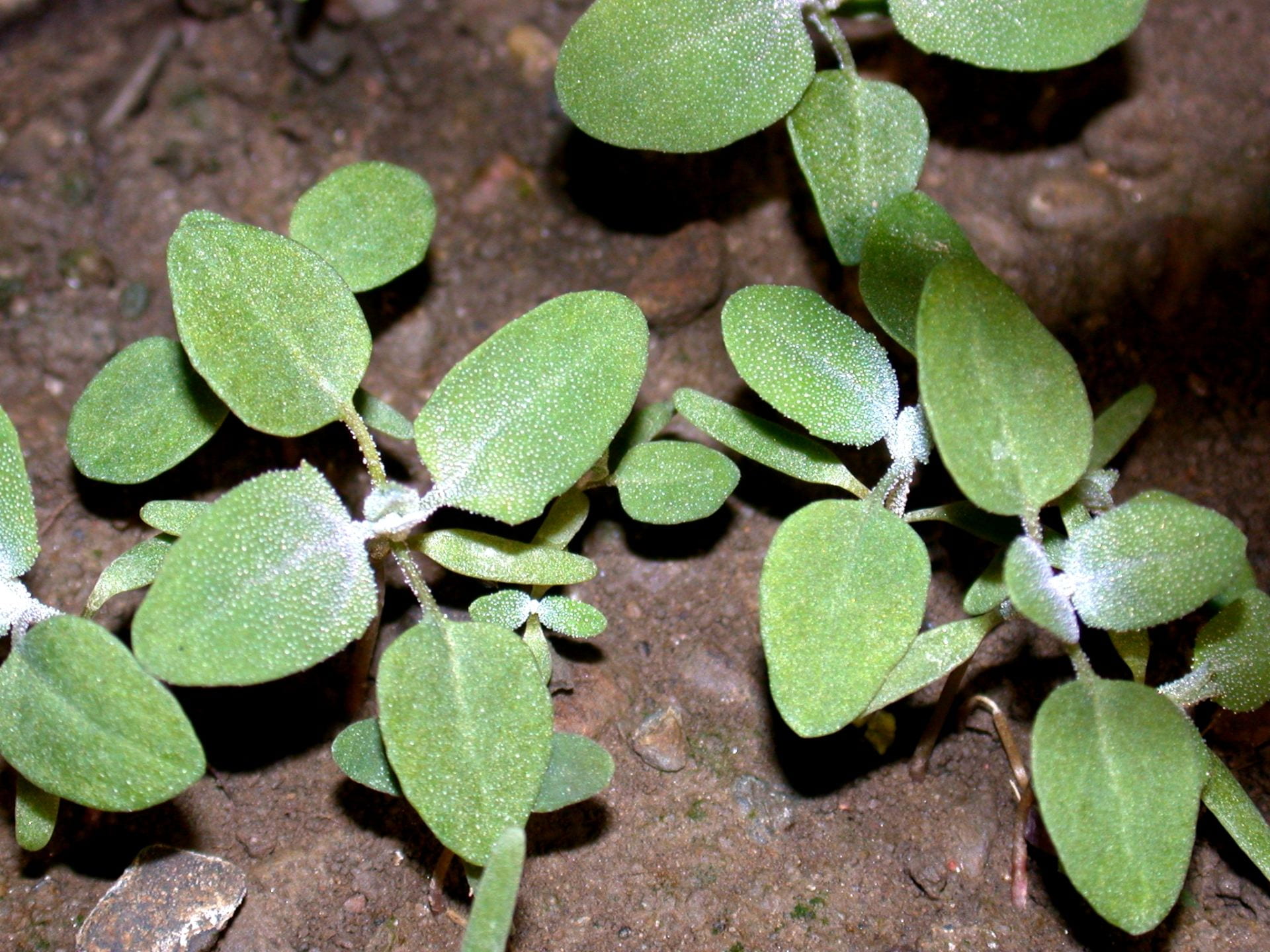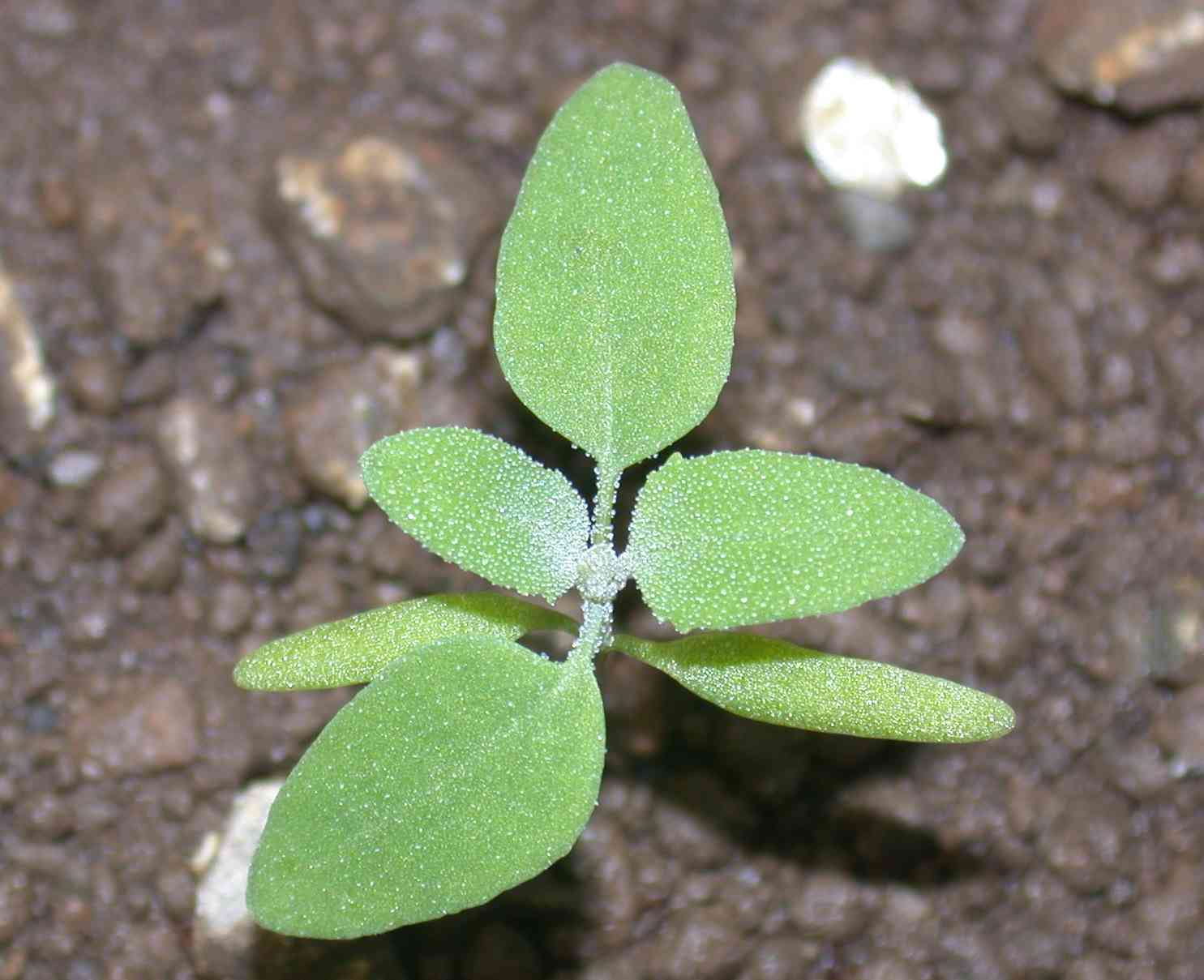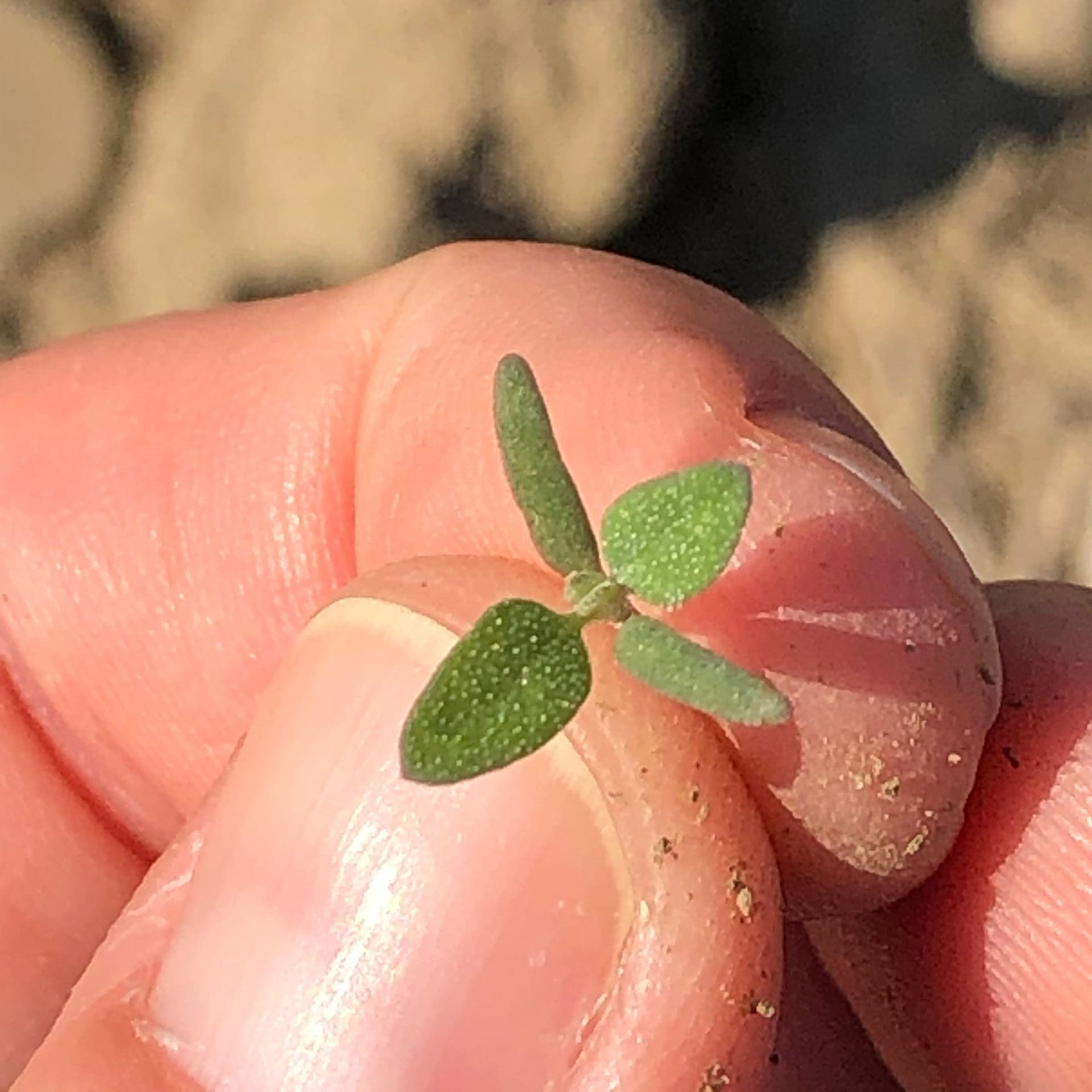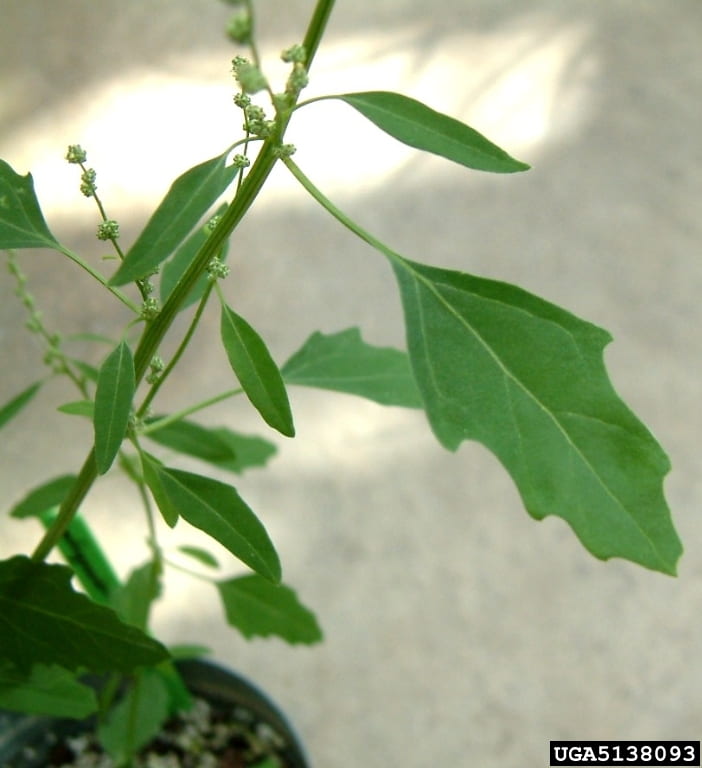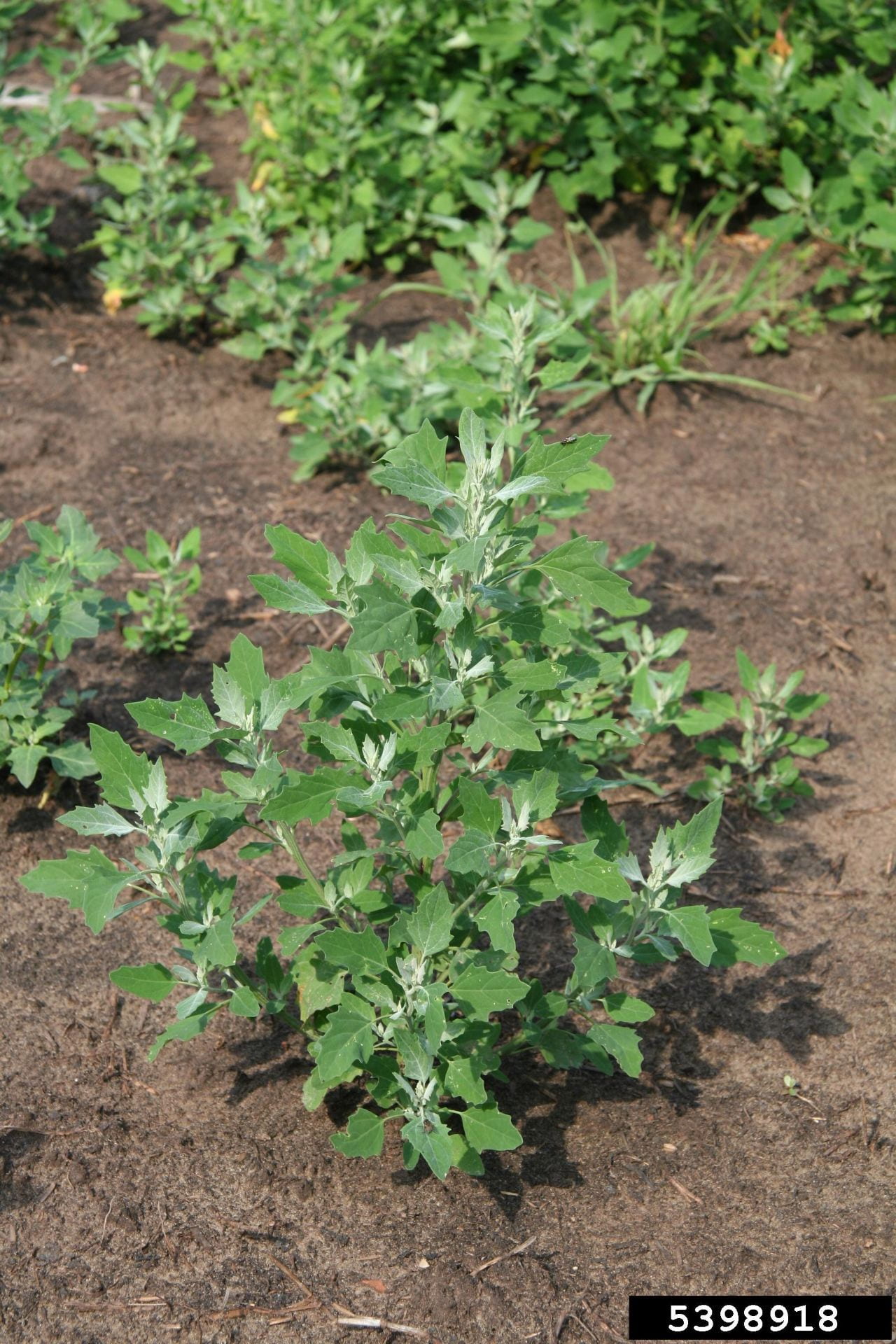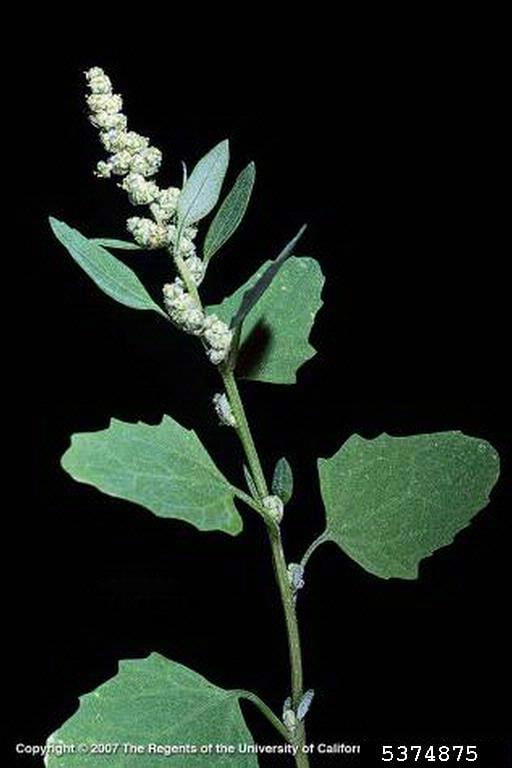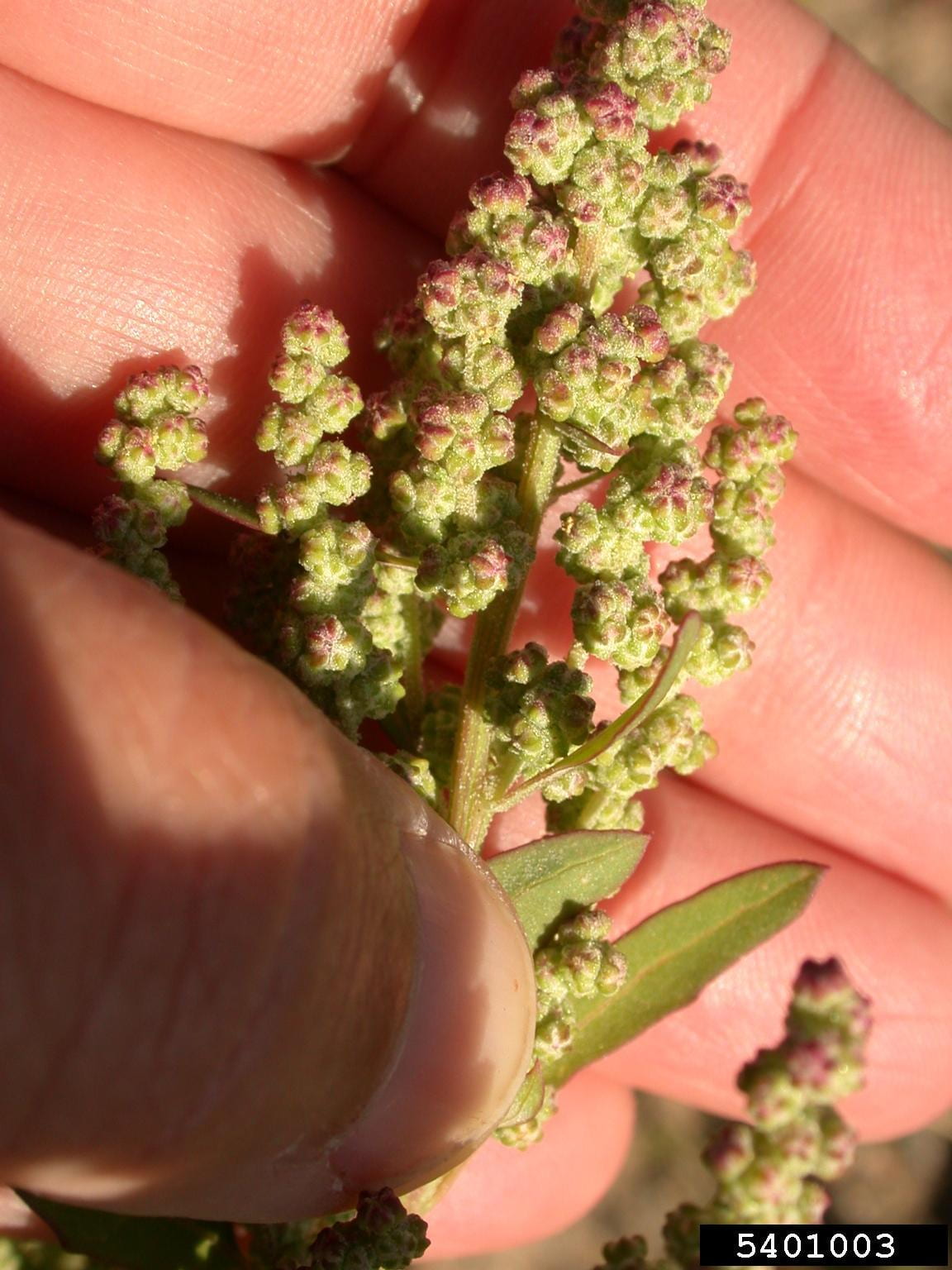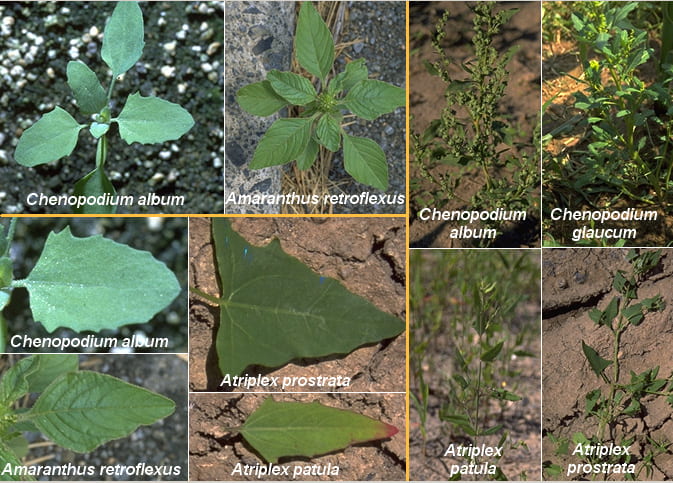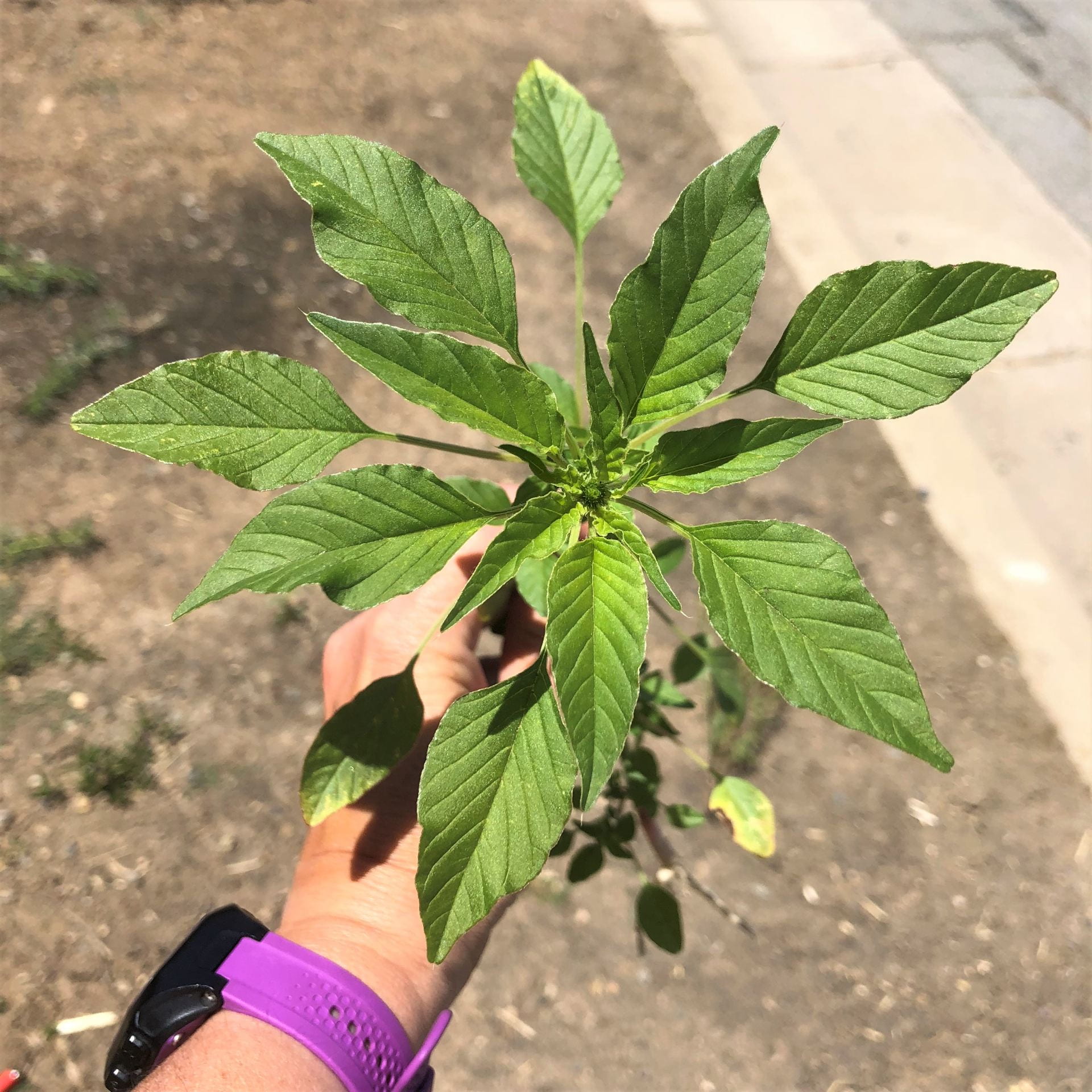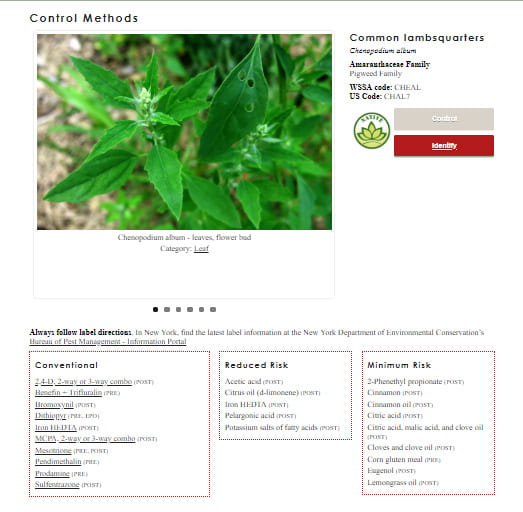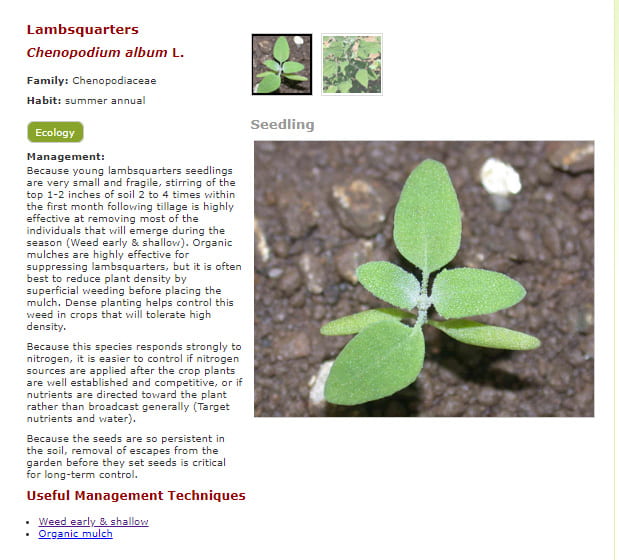Common lambsquarters (Chenopodium album L.) is a widespread weed of agricultural crops, horticultural crops, and gardens. It also grows in landscapes, waste places, and disturbed sites, on both acidic and alkaline soils, and is common throughout the US.
There have been reports of herbicide resistance in the US since 1975 with most reports for corn, but also in soybeans, cropland, nurseries, mint and potatoes. Up until 2001, all reports for resistance were to Photosystem II inhibitors (Group 5, e.g. atrazine). Since 2001, two cases of resistance to ALS inhibitors (Group 2) have been reported in the US.
A single plant can produce thousands of seeds, which generally germinate at a depth of 0.5 – 3 cm below the soil surface.
Toxicity
Common lambsquarters can accumulate high levels of nitrate. When high nitrate levels are consumed, oxygen transport in the blood is limited and leads to respiratory struggles. In severe cases, this can lead to respiratory failure and death. Additionally, if pregnant animals consume plants/forage containing >1% nitrate, abortions can occur. Livestock most often impacted by nitrate poisoning include cattle, sheep, and goats. To prevent nitrate poisoning, supplement all cattle with forage that is low in nitrates, especially those that are pregnant.
Identification
Seedlings: Seedlings emerge in the spring to early summer. Cotyledons are distinctively long and narrow, with no midvein and purple undersides. While the first pair of leaves to emerge are opposite each other, all subsequent leaves are alternately arranged. Leaf margins on young leaves are entire or have a few teeth. Surfaces of cotyledons, young leaves, and stems have a grayish-white powdery coating.
Leaves: Leaves are alternate and irregularly toothed. Leaves normally roughly triangular but can vary to diamond-shaped or lance-shaped. Freshly emerging leaves have the same grayish-white powdery coating as the seedling.
Mature plant: Plants grow up to 1 meter (3 feet) tall, with erect, branching stems. The top of the plant where new growth is occuring retains a greyish cast from the powdery coating mentioned above. Late emerging plants can begin to set seed within six weeks, even on very small plants.
Flower/fruit: Flowers are produced from June to September on spikes with a main stem and subdivided branches. Individual flowers are inconspicuous, small, green, dense, small clusters.
Similar Species: There are several other lambsquarters species, but none as common or as weedy as common lambsquarters and none have the whitish coating. Leaf shape may be superficially similar to Palmer amaranth, but lamsquarters is prominently notched to toothed and has the greyish coating on early growth that is very different from Palmer amaranth.
Common lambsquarters (C. album) and several other similar species. Photo by A DiTomasso, from “Weed Identification, Biology and Management” by A DiTommaso and A K Watson.
Management
Chemical control
Cornell University’s Turfgrass and Landscape Weed ID app offers suggestions for conventional and alternative chemical control options.
Climate Change and Management
Common Lambsquarters show increased water use efficiency and greater ozone resistance under elevated CO2 levels, yet perform worse in competition with crops such as soybeans, wheat and beets under the same condition, due to factors such as later emergence dates and shading. Additionally, glyphosate efficiency is reduced by elevated CO2 levels as it accelerates the weed’s growth and shortens its herbicide-sensitive phase.
# of studies referenced in this section: 8
References
Uva R H, Neal J C, DiTomaso J M. 1997. Weeds of the Northeast. Book published by Cornell University, Ithaca NY. The go-to for weed ID in the Northeast; look for a new edition sometime in 2019.
The Weed Science Society of America’s herbicide resistance database. See all the records of herbicide resistance for a weed species from around the globe. This is helpful to understand what resistances have been found, which can help explain what you’re seeing in the field. You can also search for resistant species by location.
Cornell University’s Weed Ecology and Management website. Contains a wealth of information on ecological management of agricultural and garden weeds. Look for a revamp of this site in 2020 or 2021.
Cornell University’s Turfgrass and Landscape Weed ID app. Identification and control options for weeds common to turf, agriculture, and gardens in New York; uses a very simple decision tree to identify your weed.
Colorado State University, Guide to Poisonous Plants: Lamb’s Quarter
The TakeAction website’s common lambsquarters management page. Provides an overview of herbicide resistance in common lambsquarters, why lambsquarters is a troublesome weed, and steps to manage it in your field. This website has a focus on soybean management.
Michigan State University’s weed identification page for common lambsquarters: https://www.canr.msu.edu/resources/common_lambsquarters.
Davis, A.S. and Ainsworth, E.A. (2012) ‘Weed interference with field‐grown soyabean decreases under elevated [co2] in a face experiment’, Weed Research, 52(3), pp. 277–285. doi:10.1111/j.1365-3180.2012.00915.x.
Erbs, M. et al. (2009) ‘Free-air CO2 enrichment in a wheat-weed assembly – effects on water relations’, Basic and Applied Ecology, 10(4), pp. 358–367. doi:10.1016/j.baae.2008.08.008.
Ghosh, A. et al. (2020) ‘Interactive effects and competitive shift between triticum aestivum L. (wheat) and chenopodium album L. (fat-hen) under ambient and elevated ozone’, Environmental Pollution, 265, p. 114764. doi:10.1016/j.envpol.2020.114764.
Valerio, M. et al. (2013) ‘Assessing the impact of increasing carbon dioxide and temperature on crop-weed interactions for tomato and a c3 and c4 weed species’, European Journal of Agronomy, 50, pp. 60–65. doi:10.1016/j.eja.2013.05.006.
Varanasi, A., Prasad, P.V.V. and Jugulam, M. (2016) ‘Impact of climate change factors on weeds and herbicide efficacy’, Advances in Agronomy, pp. 107–146. doi:10.1016/bs.agron.2015.09.002.
Ziska, L.H. (2000) ‘The impact of Elevated Co2 on yield loss from a C3 and C4 weed in field‐grown soybean’, Global Change Biology, 6(8), pp. 899–905. doi:10.1046/j.1365-2486.2000.00364.x.
Matzrafi, M. et al. (2019) ‘Increased temperatures and elevated CO2 levels reduce the sensitivity of Conyza canadensis and chenopodium album to glyphosate’, Scientific Reports, 9(1). doi:10.1038/s41598-019-38729-x.
Fernando N, Manalil S, Florentine SK, Chauhan BS and Seneweera S (2016) Glyphosate Resistance of C3 and C4 Weeds under Rising Atmospheric CO2. Front. Plant Sci. 7:910. doi: 10.3389/fpls.2016.00910
Matzrafi, M., Brunharo, C., Tehranchian, P. et al. Increased temperatures and elevated CO2 levels reduce the sensitivity of Conyza canadensis and Chenopodium album to glyphosate. Sci Rep 9, 2228 (2019). https://doi.org/10.1038/s41598-019-38729-x
Weed Science , Volume 47 , Issue 5 , October 1999 , pp. 608 – 615. DOI: https://doi.org/10.1017/S0043174500092341
Matzrafi M. Climate change exacerbates pest damage through reduced pesticide efficacy. Pest Manag Sci. 2019 Jan;75(1):9-13. doi: 10.1002/ps.5121. Epub 2018 Aug 31. PMID: 29920926.

